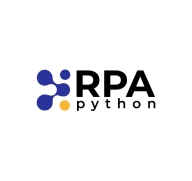


VisualCron and Python RPA are competing automation solutions in the task automation category. Python RPA is stronger in flexibility and integration capabilities, making it suitable for complex workflows, whereas VisualCron is more user-friendly with effective scheduling features.
Features: VisualCron includes a task scheduling suite, triggers, and monitoring capabilities, enabling automation with minimal programming. Python RPA provides extensive library support and seamless integration options, allowing for detailed and customizable automation workflows.
Ease of Deployment and Customer Service: VisualCron offers a guided deployment process with excellent support that simplifies management. Python RPA requires more technical setup but supports broader integration.
Pricing and ROI: VisualCron offers competitive pricing with a straightforward subscription model, leading to quick ROI through reduced complexity. Python RPA's costs may increase due to customization needs but offers substantial ROI through its capability for extensive workflow automation.



Automate offers a user-friendly solution with a drag-and-drop interface for efficient task automation and integration with major platforms like SAP and Azure, making it ideal for quick deployment with minimal coding and training.
Automate provides powerful features for businesses seeking efficient automation, offering compatibility with databases, email integration, and cloud platforms. Its simple interface supports both beginners and experienced users, simplifying tasks like invoice processing, HR automation, and data transformation. Cost-effective pricing and flexible licensing enhance its appeal while integration capabilities and scheduling tools ensure smooth workflow automation.
What are Automate's Key Features?In industries such as healthcare, banking, and logistics, Automate is used for tasks like invoice payment automation, data transformation, and task automation. This leads to streamlined processes and reduced manual workload, illustrating its value in enhancing operational efficiency through diversified workflows.
Users employ Python RPA for automating repetitive tasks and streamlining workflows, reducing manual errors, and enhancing efficiency in processing data, web scraping, and application integration.
Python RPA is valued for its ability to handle complex automation processes, its flexibility, and its compatibility with different systems. It is particularly beneficial for large-scale data handling and business process automation. Users find the extensive library and strong community support helpful for swift issue resolution and knowledge sharing. Its intuitive design and clear documentation simplify the learning curve and implementation. However, documentation can lack depth, making troubleshooting challenging. The setup process can be cumbersome, requiring more intuitive guidance. Execution speed can be slow, causing inefficiencies in workflows, and there is a need for better support and resources for developers. Some users report difficulties with integration into existing systems, suggesting enhanced compatibility and flexibility are needed.
What are the key features?In industries where large-scale data processing is essential, such as finance or healthcare, Python RPA helps automate data entry, validation, and reporting, significantly reducing manual labor and improving accuracy. In retail, it integrates with e-commerce platforms to automate order processing and inventory management, ensuring smooth operations. Other sectors, like logistics, benefit from Python RPA by streamlining dispatch and tracking processes, enhancing operational efficiency and customer satisfaction.
VisualCron automates tasks like file encryption, scheduling SQL jobs, system integration, data workflow management, and application triggering, making it ideal for handling nightly syncs, FTP server file replacements, job scheduling, and invoice processing.
VisualCron provides an efficient automation solution with features like error and status reporting, API connections, PGP key generation, encryption file creation, and bulk SQL script execution. It simplifies task automation through its mail and event triggers, job variables, conditional execution, and logging with error alerts. Users benefit from its integration capabilities, scheduling flexibility, visual interface, and support for databases and credential management without extensive coding.
What are the most important features?Industries like finance, healthcare, and logistics implement VisualCron to automate data workflows, secure file transfers, and schedule critical tasks. It is used to streamline invoice processing, manage large-scale data operations, and ensure compliance through encryption and error reporting. VisualCron enhances operational efficiency, scalability, and security in various sectors, making it essential for businesses requiring robust automation capabilities.
We monitor all Robotic Process Automation (RPA) reviews to prevent fraudulent reviews and keep review quality high. We do not post reviews by company employees or direct competitors. We validate each review for authenticity via cross-reference with LinkedIn, and personal follow-up with the reviewer when necessary.